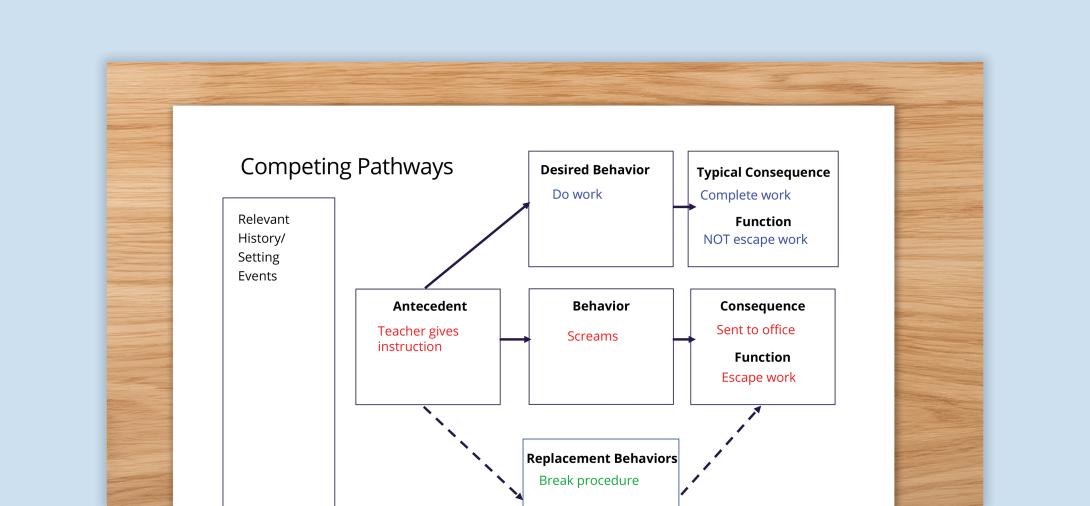Competing Pathways

When to use:
To determine a functionally equivalent replacement behavior. Functional Behavior Assessment and Behavior Intervention Plan development.
How to use:
- Identify the target behavior (red path on template):
- Identify the immediate antecedent for the target behavior (red path) Identify the immediate consequence of the target behavior (red path)
- Identify the hypothesized function of the target behavior (red path)
- Identify any setting event relevant to the occurrence of the target behavior
- Identify the desired behavior (blue path on template)
- Identify the desired behavior’s consequence (blue path)
- Identify the desired behavior’s hypothesized function (blue path)
- Identify a replacement behavior the will produce the same function as the target behavior (green path on template)
Tips:
- When a replacement behavior provides the same function, is as efficient as the target behavior, and is reinforced, the likelihood of that person using the replacement behavior increases.
- If a student has more than one target behavior, complete a Competing Pathways for each.
- Planning can still occur if you do not know the setting events.
- A desired behavior may produce the same hypothesized function as the target behavior. This behavior may be considered as a replacement behavior.
- A desired behavior may not produce the same function as the target behavior. Only use a replacement behavior that produces the same function as the target behavior.
- Don’t forget to teach the student how to use the replacement behavior and reinforce its use!
